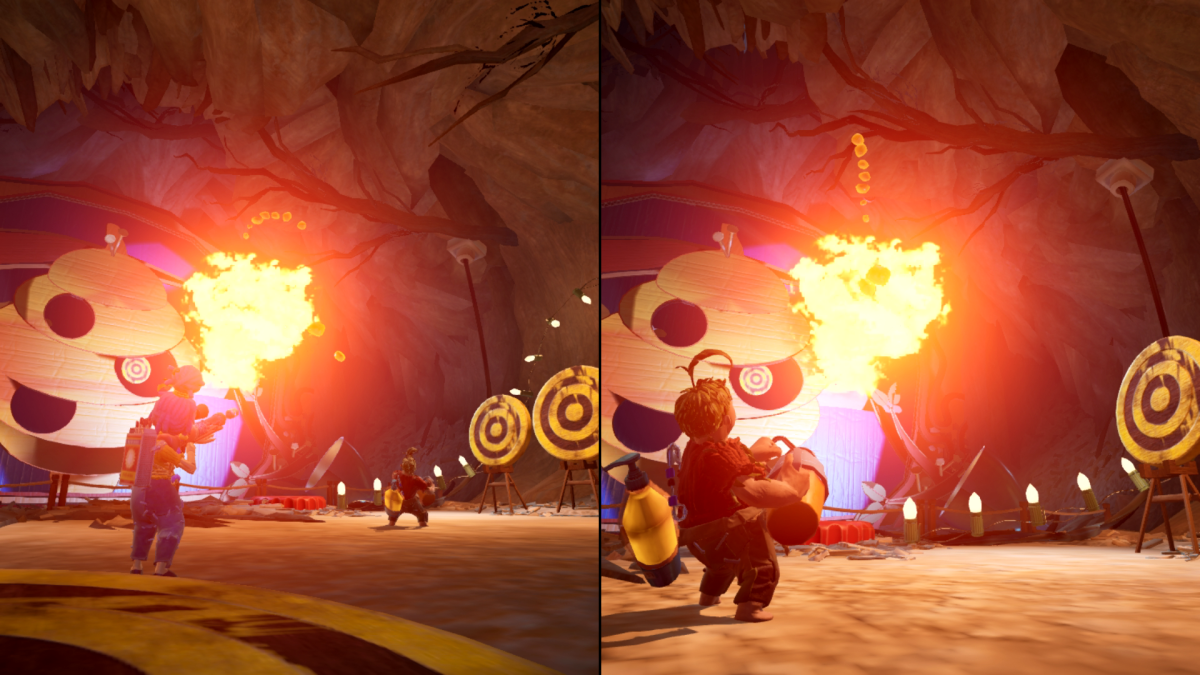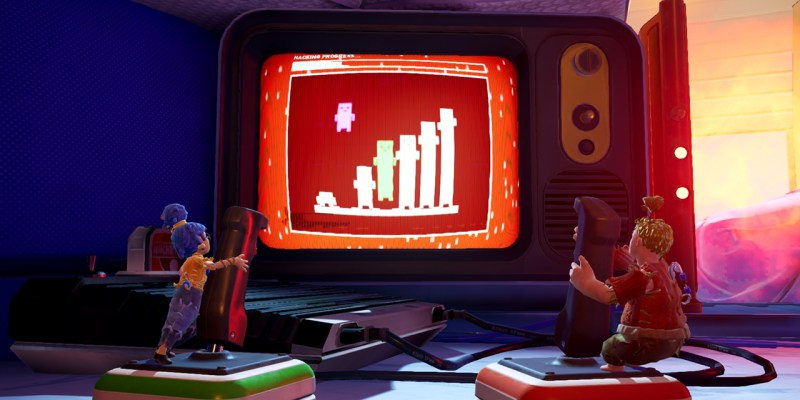It’s clear that It Takes Two is remarkable. In fact, it is such a fantastic split-screen co-op experience that it won The Game Awards and DICE’s Game of the Year award in 2021. Flash forward to 2022, and It Takes Two has made its way to Nintendo Switch. I played the game before with my partner on PlayStation 5. Upon revisiting it again on Switch, we were reminded how we relate to the couple in the game, as well as how their relationship sometimes mirrors our own. In addition, we learned how different our approaches are to completing tasks and how to reconcile those differences, both in-game and in real life.

The Basics
For those who haven’t played It Takes Two, the story follows Cody and May, a couple who have fallen out of love with each other and are contemplating divorce. They break this news to their daughter, Rose, who seems to take it well, at first. Later on, though, she cries on a wooden and a clay doll, wishing her parents would stay together. This causes Cody and May to wake up as these dolls, while their human bodies are trapped under a sleep spell. It’s up to the players to work together to break the enchantment and see if they can salvage Cody and May’s relationship.
Regardless of what platform you play It Takes Two on, the gameplay remains the same. Both characters can dash, double jump, and dodge. Levels will typically have Cody and May granted unique abilities they must use together to solve puzzles. For example, one stage has Cody using nails for May to swing upon with her hammer. Another has Cody deploying an explosive sap May ignites with a gun. It’s always a joy to work together with your play partner to figure out how to progress with your techniques. There are even competitive minigames you can discover that are solely there for bragging rights.

You Seem Familiar
As soon as Cody and May were introduced, my partner, Al, and I noticed some similarities to ourselves. For example, both May and Al are very career-focused individuals. They are both no-nonsense and enjoy ribbing their significant others with slightly mean-spirited comments. Likewise, Cody and I are very goofy and love to crack jokes, even when the situation doesn’t call for them. We’re pretty sensitive and fun-loving. Cody likes to egg May on as much as she does him, which I also do to Al. Although, I think it’s because their personality rubbed off on me.
As far as our game styles are concerned, Al and I can be quite different. I am an exploration-driven gamer, whereas Al likes to just jump straight to objectives. You can imagine how this contrast affected our playthrough, with my seeking out the aforementioned minigames while Al was always ready to conquer an area.
We also have our own unique strengths, which were quite evident in It Takes Two. Al’s accuracy is always higher than mine due to their growing up on first-person shooter games. As such, any section or minigame that involved sharpshooting always went their way. However, I grew up on platformers, so any sections or boss fights that involved precision jumping were always easier for me. It’s fascinating to see it on display in a video game where we rely on each other to progress.

Real-life Battles, Real-life Resolutions Through Gaming
I’m the first to admit I can be a bastard playing co-op titles. I have no patience for failure and can fly off the handle easily when I am in a bad mood. In-game, I usually try to smack my partner with a hammer or shoot them with a gun to vent frustration, even though there is no friendly fire. If there is the ability to send my partner to their doom with a mistimed switch pull, you can bet I will do it at least once. There is a lot to unpack there, but I believe I like being evil in video games because I’m more kind in my daily life.
When I’m frustrated, though, it brings the whole mood down in real life. I’m miserable over a simple video game, and Al gets upset because they are the target of my misery. Al rightly knows games like It Takes Two are meant to be fun more than anything and are not worth getting upset over. Realizing this led me to try to have more patience, which helped in-game but also strengthened our actual relationship. I’ve still got a ways to go, but I’m more aware of my faults than I have ever been.
Once you work through your issues, as Cody and Rose do in It Takes Two, there is a lot more joy. You know to rely on your partner’s particular strengths, and they, in turn, start to improve their weaknesses. There is more laughter and less shouting. Minigames become more about friendly competition than a way to talk smack to each other… though those two things can certainly coexist. By the time the credits roll, you’ll feel like both your avatars and yourselves have a better understanding of one another. That was certainly my experience with Al, at least.

It Takes Two (and Then Some) to Have Fun on Switch
Despite all of our praise for It Takes Two, Al and I do not recommend playing the game on Switch. The frame rate is lower than in other versions, textures are blander, and controls are way more floaty. In the interest of fairness, we popped in the title on PS5 and tried both the PS4 and PS5 versions, just to see if we were being too harsh. But we immediately agreed the lighting is far better, the controls have more weight, the environments are beautiful, and there is a great sense of scale and wonder due to your small size as dolls. All of this is diminished for It Takes Two on Switch. And its strength in being a portable machine doesn’t mean much with a co-op title.
Although I think you should only play It Takes Two on Switch if it’s your only game console, I believe it must be experienced by any means necessary. It will help you understand your friends or significant others better. There may be hardships along the way before you get to that resolution, but in the end, it will bring us all closer together. There are not a lot of video games you can say that about.
